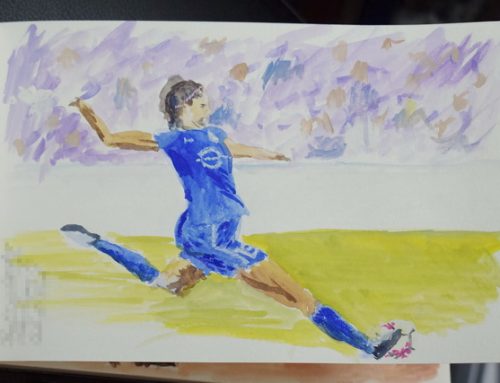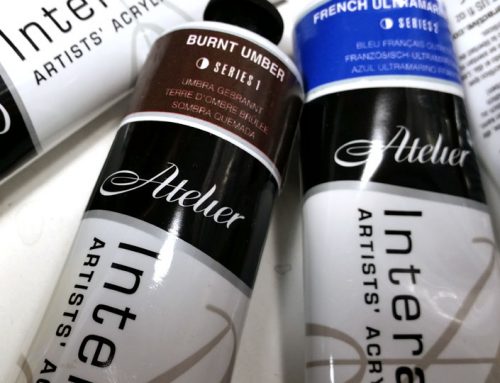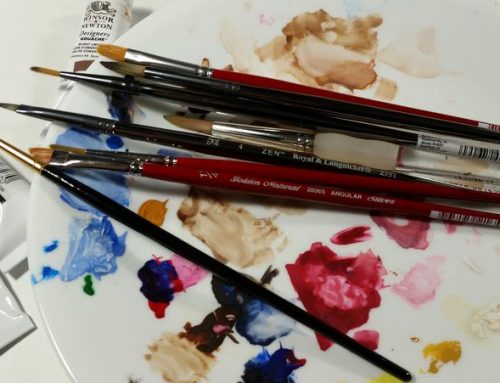Most art-type people use things like brushes (AKA “hairy sticks”), pens, pencils, computers, arc welders, and other sundry items to extract what they see from their mind’s eye and fix it in some way that can be shared. That being the case, what led me to the airbrush, one of the most vexing of the arting tools?
I’d been doing art stuff for as long as I can remember when the airbrush entered my life. Honestly, while I’d heard about photos being “airbrushed”, I never really knew what that meant. This all changed for me in 1978, when I started working at a hobby shop. Among the things we sold there were airbrushes. I soon learned how much better a model could look when painted with an airbrush than with a hairy stick. Being a long-time model-builder, I just had to get one.
 You can see my first airbrush, a Badger 200, at the right. It’s finish has seen better days and it needs to be refurbished if I ever wanted to use it again, but a whole lot of paint got shot through that gun (and others) for ten years starting in 1978. Off and on through the 80s, my airbrushing went from models to vehicles. It was sometimes hazardous, being that respirators weren’t really the thing back then (plus, I was in my 20s and stupid). So the vehicle airbrushing was very sporadic because I sort of liked being able to breath. It was weird as it was almost a secret double life. The airbrushing side pretty much never crossed over to my other activities. I don’t think a lot of my friends even knew that I was doing it.
You can see my first airbrush, a Badger 200, at the right. It’s finish has seen better days and it needs to be refurbished if I ever wanted to use it again, but a whole lot of paint got shot through that gun (and others) for ten years starting in 1978. Off and on through the 80s, my airbrushing went from models to vehicles. It was sometimes hazardous, being that respirators weren’t really the thing back then (plus, I was in my 20s and stupid). So the vehicle airbrushing was very sporadic because I sort of liked being able to breath. It was weird as it was almost a secret double life. The airbrushing side pretty much never crossed over to my other activities. I don’t think a lot of my friends even knew that I was doing it.
My airbrushes increasingly fell into disuse as my first career as a sport photographer was building, taking both my time and my money. By the time the 90s rolled around and I moved to a different state, I sold most of my equipment except for that first airbrush.
Fast forward sixteen or so years. A friend of mine offers me a job that entails being a photographer with a side of doing airbrush tattoos. I jumped in and started practicing. That quickly led to the dormant airbrushing fires being lit. I soon purchased a new airbrush and a small compressor. The rest…well, you sort of see the result here.
Sometimes a tool just seems to fit. It’s that way with me and airbrush. Since those first days with one in ’78, I’ve known that the airbrush chose me more than I chose it. I can’t say exactly why. It can be a difficult tool. The startup costs are high for paint-on-support art what with having to buy good airbrushes and compressors. It’s slower. I see watercolorists whipping out a dozen or more painting in a week. That’s not happening when you’re shooting paint with the intent of committing fine art. It takes time and diligence. On the plus side, I don’t have to wait months or years for my paint to dry like oil painters. There are pluses and minuses for every art path.
For the most part, airbrush is going to be a part of the majority of my art. It’s the tool that sang to me. More than anything else, that’s why the airbrush.





